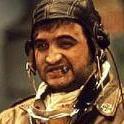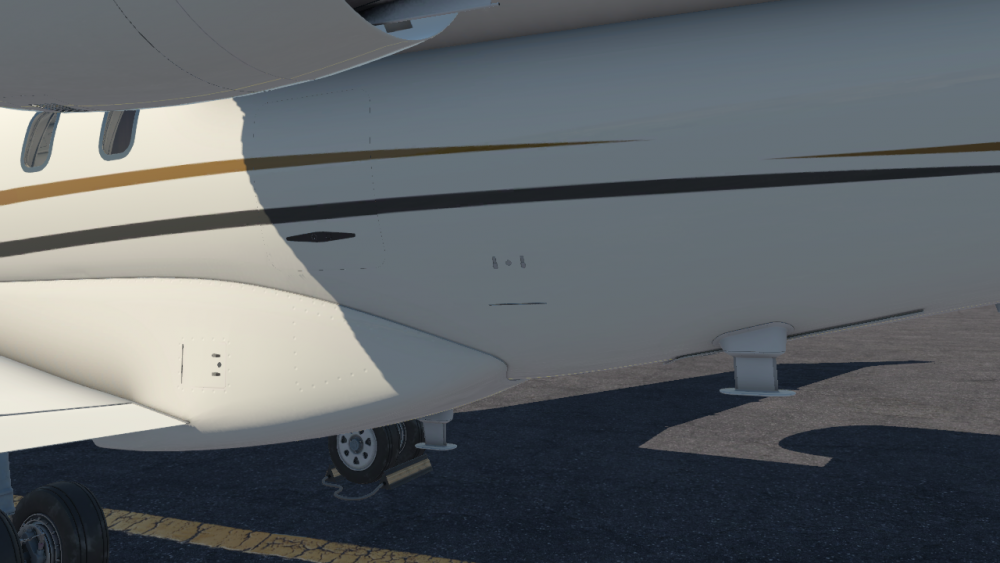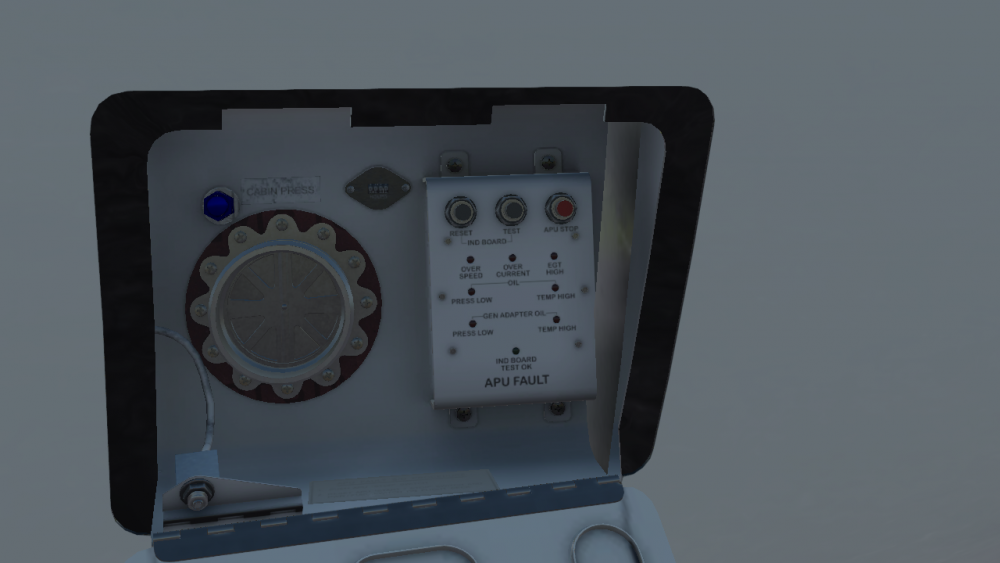Leaderboard
Popular Content
Showing content with the highest reputation on 03/28/2022 in all areas
-
Version 11.0.2
1,593 downloads
This is a conversion from v9.60 to v11.41 of the Ilyushin IL-14 made by Andrey Kozyaruk (Felis, felisleopard@gmail.com) and Alexaner Babichev (Asso). This plane has a fully functional 3D cockpit, interiors, static elements, working doors and complex avionics. It comes with 7 additional liveries and the paintkit. The original plane has been released as freeware to the public domain. Here follows the text of the original license file that comes with the plane where there is no restriction to update the plane to the latest release of X-Plane: This pack contains model IL14P for X-Plane9.30 simulator This model is freeware and can be distribute by any way with notice auothor's name Comonents in directories /plugins/ и /Custom Avionics/ are free and ditributes under the GPL license and can be used in every way you want, in case of all autority and licks are reserved. See for plugin updates on http://code.google.com/p/sasl/ Autor of model, phisics and gauges - Andrey Kozyaruk (Felis) felisleopard@gmail.com Autor of plugin and its standard components - Alexaner Babichev (Asso) Enjoy.1 point -
Version 1.0.2
483 downloads
This livery is based on a real Global Express, G-CEYL, which is operated by the charter company VOLUXIS. I had to adapt some of the stripes to better fit the Challenger, so this is not a totally accurate representation of the real aircraft, but it is as close as I could get it. For some extra flair, I have included custom normals with this livery to give it more of a semi-gloss finish. Enjoy!1 point -
I'm going to put in my two cents worth, and my procedure will differ somewhat from what the "schoolhouse" teaches. Let's talk about the easiest scenario, which is an RNAV (GPS) or RNP approach to LPV or LNAV/VNAV line of minima. The minima for these approaches are specified as a decision altitude or DA. They provide the same TERPS or PANS-OPS protection for a momentary descent below the DA as does an ILS approach. From the initial approach fix (IAF) inbound, you should have VNAV selected. You may use VVS, VFLC, or VPTH to descend the aircraft through the initial and intermediate segment step down fix altitudes, and VNAV will honor all of them. However, the easiest is to fly VPTH and let the VNAV track the vertical path through each of the stepdown fix altitudes to the final approach fix crossing altitude. You may select the APP button at any time after the final approach fix. Once selected, the Vertical Glidepath (VGP) mode will be armed (shown as a white VGP in the FMA) and will become the active mode during the in the intermediate segment sometime past the (IF) fix. There are two important things about the VGP mode: 1. It will not honor the altitude preselector set altitude. If you're not cleared for the approach, if VGP has captured, it will descend on the final past the FAF. Once VGP is annunciated in Green, you can set the missed approach altitude just like on an ILS 2. On very hot days, e.g., 40C plus, VGP may not honor intermediate segment stepdown altitudes. The reason for this is that VGP mode from the IF fix inbound uses SBAS to compute the vertical path, which is not affected by non-standard temperatures, and like an ILS glideslope will take you below the intermediate segment stepdown altitudes on a very hot day. So, on a very hot day, you might want to stay in VPTH mode until passing the last stepdown fix in the intermediate segment, then press the APP mode. You might have to use VS to vertical speed down to capture the VGP path from above. I do not know if X-Plane or Hotstart models this behavior, but this is something to watch out for in the real Collins SBAS equipped airplanes. Past the FAF, you would descend to DA in VGP mode and at DA, if the runway is not in sight, press the go-around mode and then climb out and execute the missed approach. On an approach with the LNAV/VNAV line of minima, the procedure is the same; however, VGP vertical guidance is based on Baro-VNAV. You must honor the low and high temperature limits published on the approach, but you don't have to worry about the VGP path going below the published intermediate segment stepdown altitudes. An RNAV (RNP) AR or RNP AR approach is pretty much the same thing. However, I am not sure if the Collins system uses SBAS guidance for the vertical in the final approach or if it is using just LNAV/VNAV. RNP AR approaches are a strange breed because use a "Vertical Error Budget" or VEB for vertical obstacle clearance, which was originally based on Baro-VNAV use. I actually believe it does use SBAS guidance inside the FAF/FAP, but I need to check on that. The next scenario is if you are flying an RNAV (GPS), RNP approach, or a conventional approach (VOR or NDB) using the FMS. The minimums are all based on a minimum descent altitude or MDA, which is a hard altitude that you cannot go below during the approach without the runway environment in sight. For an RNAV (GPS) or RNP approach (not RNP AR...easy to get confused since ICAO has muddled the terminology), you would fly the approach to the final approach fix (FAF) described as above except that you would remain in NAV (LNV) and VNAV (VPTH) mode. Approaching the final approach fix, you would set the altitude preselector to the MDA. In the CL300/350 PL21, when you dial the altitude preselector down by 1000' increments, it will have an increment that matches the BARO setting on the PFD. I don't know if the CL650 has the same feature, but suspect that it does. In VPTH mode, the aircraft will level at MDA that is set in the altitude preselector. However, there's a problem... If you are descending on the VNAV path in VPTH from the FAF to the runway threshold crossing height, if you level even for a moment at the MDA, you are now above path. if you suddenly see the runway, there is an urge to "go for it", and that's how runway excursions and landing overrun accidents occur. With the constant descent final approach (CDFA) concept, you never level off at MDA. Further, you add a height adjustment to the published MDA to account for the transition from CDFA or VPTH descent to the missed approach climb. In some European States, that height additive is specified by type in the AIP (e.g., France). In other States, it's left to the operator. If you have to determine one, a good rule of thumb is the USAF's 10% of the vertical speed anticipated on final, which is shown on the Jepp charts for the goundspeed expected in the final segment. For 3.0 path, that will be about 60 feet for most CAT C aircraft. A descent path more than 3 degrees may require a larger additive. If you don't apply CDFA in Europe, the approach minimums are increase by a meter equivalent of approximately 1/4 SM for CAT C and CAT D aircraft so that you will see the runway before you get to the nominal 3.0 descent path to the runway. That way, they ensure that you see the runway before the nominal 3.0 degree descent point. No such rule in the US where CDA is encouraged, but it is voluntary. Most schoolhouses teach setting the altitude preselector to MDA (with or with additive) when either on VPTH or level in ALT with VPTH armed when approaching the FAF, then using NAV (LNV) and VNAV (VPTH) to descend and level at MDA. My preference is to fly it like an RNAV (GPS) approach with LPV or LNAV/VNAV minima or an ILS approach. I set the BARO to the MDA plus the additive and then use VGP mode since I'm never going to level at the MDA+additive. When the voice says "minimums, minimums", if the runway is not in sight, it's a missed approach just like LPV, LNAV/VNAV, or ILS approach. This falls into "technique", but it does drive some instructors nuts because they want to show me the system. I want to show them how I'm going to fly the airplane! A VOR or NDB approach is similar; however, the FMS will warn you that it is a REF APPR only, meaning that from the FAF to the missed approach point (MAP), you must have a VOR needle or CDI or at the NDB/ADF needle displayed and that it must also be used for primary course guidance in the final segment. Otherwise, the procedures described above are the same. I don't know if this answered your question, but I hope it helps. Rich Boll1 point
-
Exactly, that was it indeed! This airplane ROCKS in realism ;-)1 point
-
Impressive Pils! But no all CBs are in. I really have no clue. Just restarted and the 3 CAS messages are still there. Consulted with our CL650 pilots, they also have no clue... except... Hurray, a long press on the APU exterior RESET button cleared the faults, and had the APU started. Unbelievable this aircraft!1 point
-
HotStart, in my opinion, has produced aircraft of the absolute highest quality, bar none (I've never owned a PDMG aircraft). So much so that I sorta wanted to hangout around their website, read their blogs, and find out who these folks are. I've not be able to find such a site. Perhaps, I've been looking in the wrong place or HotStart is too busy developing to create a site. If the former is the case, then I hope someone will point me in the right direction, otherwise; I can't wait to see what's next. I recently discovered Cameron's blog and I really enjoy them. There are written in such a way, that even a dull knife soul, like me, can understand. He explains technical concepts really well. I still can't quite figure out if he's a developer - guess I got some more reading to do. -- VirtualGAa1 point
-
1 point
-
1 point
-
Not something we're going to be discussing here. If your "friend" sent you a copy of the aircraft then they too are a software pirate. This is both illegal and deeply insulting not only to the developers who have spent years of their life developing this project, but also to everybody else on the forum who spent their own, hard and honestly earned cash on this product. I'm locking this thread to protect ClearForTakeoff from the impeding community fallout, as that sort of thing does no good for a community forum. I'll also add the strong recommendation that they, and their friend, consider how they value simulation products and the community, and consider the fact you are, in no uncertain terms, stealing from a small, dedicated group of developers that have done nothing but good for the wider sim community.1 point
-
When the APU encounters a fault, you'll need to hop out of the plane and reset the APU ECU to clear the fault. Go to the tail of the aircraft near the cargo door, pop the latches and pull the little door open under the left engine nacelle: Inside you'll find a panel with 3 buttons. Push the "RESET" button, close it up and you should be good:1 point











